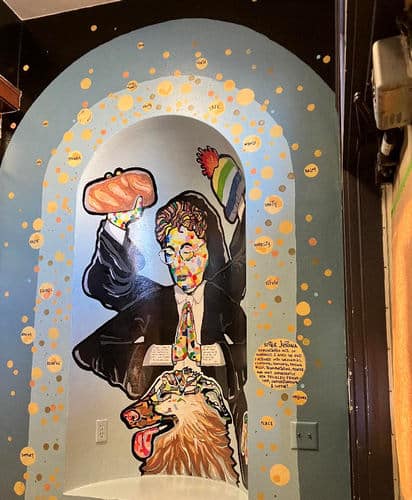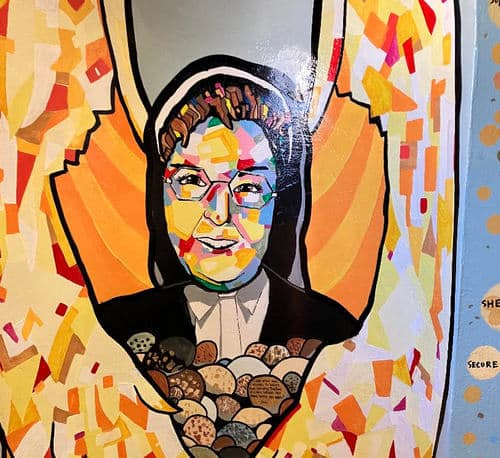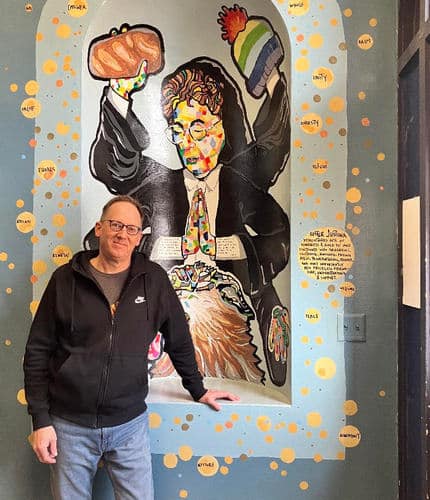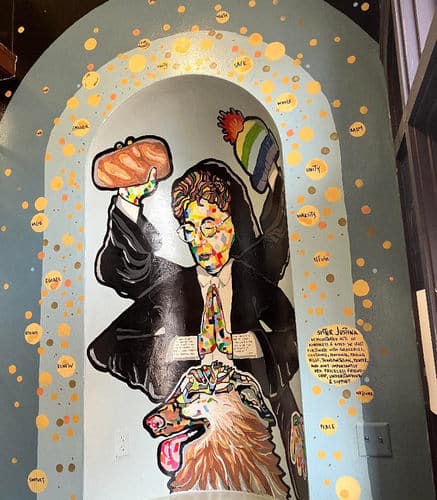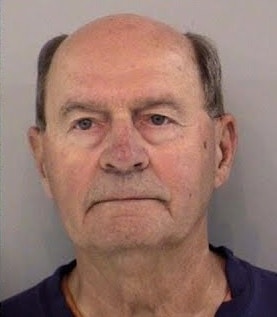The Care and Share of Crookston recently hired local artist Trey Everett to paint two Murals located on the east and west wings of the building. In January this year, Director of the Care and Share of Crookston Carolina Alfonso had a grant approved in the amount of $10,000 for indoor and outdoor Artwork to be done to the facility.
“Some of the board members for the Care and Share wanted another Mural in the entryway,” said Everett, “When you first walk in, there’s a small space, and they wanted a Mural on each side honoring sister Justina.” Sister Justina Violette founded the Care and Share of Crookston in 1986 and was dubbed Mother Theresa of the North. In 1999, she was given the Lumen Christi Award from the Catholic Extension Society and named her Missionary of the Year.
Trey Everett began extensive research about sister Justina to develop design ideas and ways art could portray her characteristics. Everett started the painting process in the middle of January and finished the pieces on February 15. “The artwork I love doing is multi-layered,” said Everett, “I always love to create an image that creates many meanings behind it. And that’s the same with these images with Sister Justina.”
The east side Mural artwork symbolizes “Wings and eggs.” These two symbols represent the passage inscribed in one of the eggs. Sister Justina has wings to gather together and protect the people at Care and Share over the years. The eggs symbolize inclusion and unity in the midst of diversity. The variety of egg coloration and patterns not only represent the variety and diversity of skin tones throughout humanity, but they symbolize that no matter what race, ethnic group, physical characteristics, social status, religion, language, or geographic region people are from, they are all welcome at Care and Share. Background: The light blue to black background and the globes of light in both murals symbolize the light of compassion and love expanding into the community and region.
The west side Mural artwork shows a stained glass face and hands, a portrait of sister Justina. The Artwork depicting saints often shows a halo, representing their inner goodness or light reflecting outwards. “The halo represents this inner light or holiness that’s shining out,” said Everett, “That’s the idea of the halo, and you can tell the inside of this person is good. So I decided not to go with the halo and used stained glass so light shines out of her face and hands. So, in both images, she has this stained glass look about her.” Instead of featuring a halo in the image, Everett decided to feature both face and hands in both murals, with a stained glass feel representing Sister Justina’s inner light and goodness shining through.
The west side Mural also depicts six arms in the image to represent the incredible amount of work she was involved in at the care and share. Throughout, she featured her face and hands in both murals, with a stained glass feel representing her inner light and goodness shining through. Six arms: Her six arms represent the incredible work she was involved in at Care and Share over the years. The arms in the image represent bread held to symbolize feeding the hungry, clothing, which implies providing clothes, and a key, which symbolizes shelter.
Everett’s style of art often, at times, involves inscribing words and literature into pieces, which can help direct his audience to grasp the idea behind the piece. “In many of the circles of lights (in the art), I’ve put words and literature,” said Everett, “Words like hope, love, compassion, community, and safe place. I like to do that with my art. I like to add words or phrases, and it’s good because people will tend to look at the image and then read the words, adding another layer.”
Everett believes these Murals help with the overall appearance of the building as well as give a warm and welcoming feel to people who walk in. “I think this helps with the beauty of the Care and Share,” said Everett, “I do think it helps with morale because residents can see this and hopefully feel like ‘yeah, I am in a good place’ and feel that it’s a place that can protect them and be a place they feel will provide them for their needs and ultimately help them get back on their feet.”

Tags:


